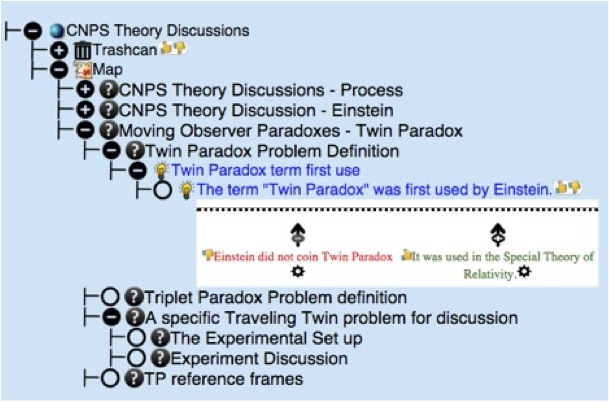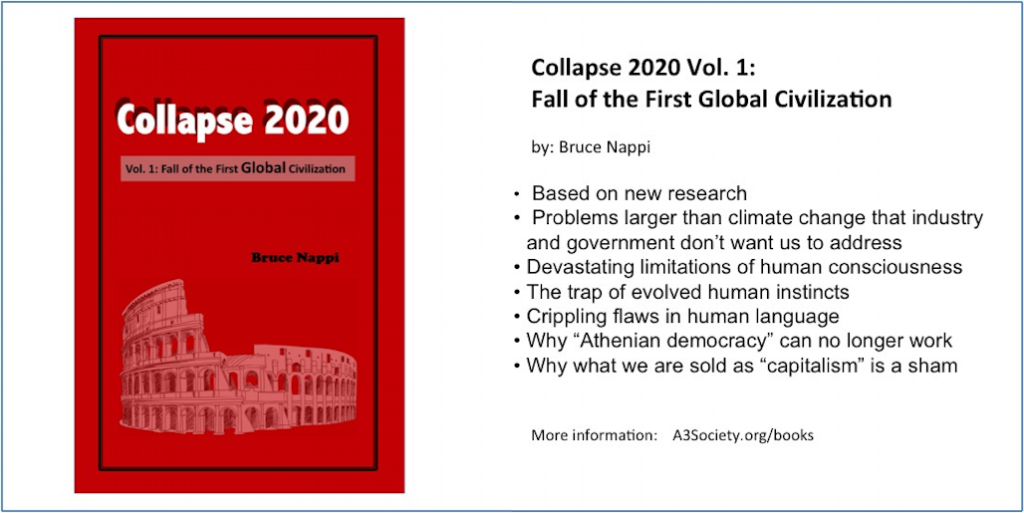Communications in modern society have reached a breaking point. The internet promised the miracle of opening instant communications to all people of the world. But, because it was implemented through a highly competitive commercial model, this “miracle” was largely lost. Online communications are broken! This breakdown is far more serious than most people recognize. This short article summarizes this problem and some suggested solutions.
To understand the problem, it is important to define “breakdown” more precisely. The primary cause of this breakdown is the inability of human brains, refined by evolution for survival in a primitive natural environment, to deal with the complexity of modern technology. As was explained by William Allman in his book Stone Age Present, humans essentially still have Stone Age Brains. (This is discussed at length in my Medium article Complexity and Stone Age Brains. )
All major issues in modern society are complex. When addressing complex issues, modern society’s ability to investigate and resolve the issues has essentially come to a standstill. In world government, for example, it is referred to as Gridlock. We see complex issues discussed and “debated” all the time on TV and the internet. The major problem with all these events is they use time-based “stream of consciousness” in post and comment formats. That is, some person writes and posts a short statement. Others reading it jump into the discussion, usually drawing on their own memory, and post replies. Each reply then gains further replies, also drawn from memory.
Most people take this format for granted. They think it is the only way it can be done. In fact, this is how humans have interacted since our “caveman” days. It is the Internet’s major disaster when dealing with complex issues. To comprehensively deal with a complex issue, the following communication interaction elements are typically left out:
1. Many subtopics and details need to be included and addressed.
2. The subtopics and details often interrelate in complex, overlapping ways.
3. It takes a lot of time to review all the details.
4. Understanding the details requires involved thinking.
5. Understanding and interpreting the details requires specialized backgrounds.
6. Verifying the accuracy of details often requires references to external sources.
7. Recognizing novel interrelationships among many details requires creative skills.
8. Judging the logical interrelationships of details requires philosophical skills.
9. Recognizing hidden questions or mistakes requires critical thinking skills.
10. Organizing the flow of discussions requires system skills.
11. Organizing the process of discussion requires management skills.
None of these processes are captured by a simple “stream of consciousness” email interchange, or comments to articles, or Twitter posts and comments, or even most Forums. Even in long “magazine format” articles, only the shallowest summaries can be provided. In addition, these are the opinion of only one or a few people. It’s essentially the same format used by orators in ancient Babylonia or Greece.
Now, add into the process the wide range of human variability, personality and the logistics of modern lives. This introduces the following additional personal issues:
- Time availability
- Personal background. Basis of many life assumptions
- Discussion style: patience, tolerance, respectful, etc.
- Willingness to research and prepare
- Social outlook: supportive, critical, combative, deceitful, angry, etc.
- Purpose: social interaction, knowledge gathering, being noticed, being disruptive
- Ability to deal with ambiguity, or hypotheticals. Ability to deal with errors
- Ability to resolve differences
- General level of intellect and memorization ability
- Number of people involved in the discussion
- Ability of people to focus vs. heading off on tangents
In order to solve this serious problem, society needs to capture all the “left out” elements and deal with all the variability. Here is an example of a process that begins to do just that. To help you believe that it might, actually, be possible, here’s a short example of how well the process can work.
I joined a discussion group that was asking the question, “how can we get “society” to wake up to how serious the climate issues are”. This was actually an academic group that had already been discussing the question for over TWO YEARS! They admitted they were stuck. (Good start. Admitting a problem is “half the battle”, as they say.) I brought in my methods. They took about two weeks to learn how to use them. In SIX more weeks (two months total effort), the “logjam” was broken!
Notice, I didn’t say they “answered” their question. They didn’t. What they did accomplish is recognizing two things: 1. Their question was too broad and general. Any meaningful answer would require viewing “society” in a LOT more detail – like city vs. rural; cold climate vs. tropics, accountants vs. police vs. librarians, etc.. 2. They hadn’t collected sufficient fundamental reference information to answer the question! There is, unfortunately, a sad end to this story. While they thanked me for helping them to not go on for two or more additional years without results, when deciding what to do next, the group simply broke up. All the participants joined other discussions using their conventional approach, ignoring the tools I gave them.
A3 Structure Discussion – process and Tools
Q&A: These are similar to email posts or comments. The discussions, however, are organized and labeled as discrete topics, and associated with one or more specific authors. The author should be or select a moderator. Both the author and the moderator may participate in the discussion. There are also special marking for automatic sorting.
Tracking and Summarizing: Every post and comment is captured in a larger document that can be easily searched. Each post and comment are accompanied by a list of “keywords”, and a summary of its content. They would be captured in a new “to be developed” “interactive” outlining and tracking tool that enables indexing and accessing every email and comment. Notice, this one tool implements 4 structure goals: 1. Presents topic knowledge; 2. Captures and organizes the knowledge; 3. Adds wisdom by applying structure; and 4. Captures the knowledge, wisdom and flow of the discussion for future use. An example excerpt is shown below that tracks a current – and yes, ongoing – dispute over the validity of Einstein’s Theory of Relativity.

(This example was generated by a software application called the Deliberatorium, developed by Professor Mark Klein at the MIT Center for Collective Intelligence.)
Organizing: The document is organized in a formal way that can be easily understood for review and matches the universal knowledge structure.
References: New participants come into the discussion at random times at all levels of experience. To bring novices about each topic up the learning curve quickly, the organized material – a veritable encyclopedia of “references” – has formal guidelines that explain how users can “catch up” to the current level for ANY issue. These references are also available to experts who assure that the discussion is bringing in true and relevant material. Because the “local” knowledge structure matches the “universal” knowledge structure, for any ongoing discussion, all participants have direct access to:
a. Primary references to both current and historic documents.
b. Original research data where available.
c. Encyclopedia summaries like Wikipedia.
d. Websites with articles.
e. Summary works that discuss major historical transitions for a topic – like how “science” dropped alchemy.
f. Media material related to topics being discussed – art, video, audio etc.
It’s obvious that most organizations can’t possess all of this material directly. So, a lot of intermediate annotated indexes are needed.
Knowledge and Wisdom Retention: To prevent the wisdom of the discussion from being lost, the “lessons learned” during the discussion process are identified and then saved in a “higher level” structured place – i.e. the “Universal Encyclopedia”.
Coordination: What makes a society greater than the sum of its members is the ability of members to work together. A coordinating role is provided to turn individuals into a SYSTEM. With the Outline acting as a “roadmap” for discussions, a good moderator can turn into a good facilitator by pointing out loose ends or special opportunities for action.
Moderation: Is defined as the “avoidance of excess or extreme”. The problem with conventional moderation is that it is subject to human interpretation and implemented as an authoritarian process. A new “rule based” approach to moderation would be used consistent with Personalized Democracy methods. Specifically for discussions, this means the participants would conduct discussions in one context – the email or comment string – while the substantive information is extracted and handled in a second process – the information Outline. The structure and wording of the Outline, however, is also completely transparent to the email and commenting participants. The moderation process gives all participants direct access to the coordination level to apply corrective action directly to the Outline, thereby blocking any bias or mistakes introduced by a moderator.
# ##
To read more about severe language problems that are true threats to human society, take a look at my new book: Collapse 2020 Vol. 1: Fall of the First Global Civilization.

